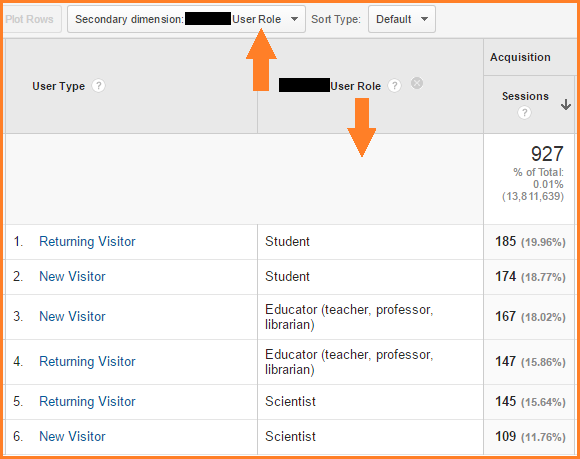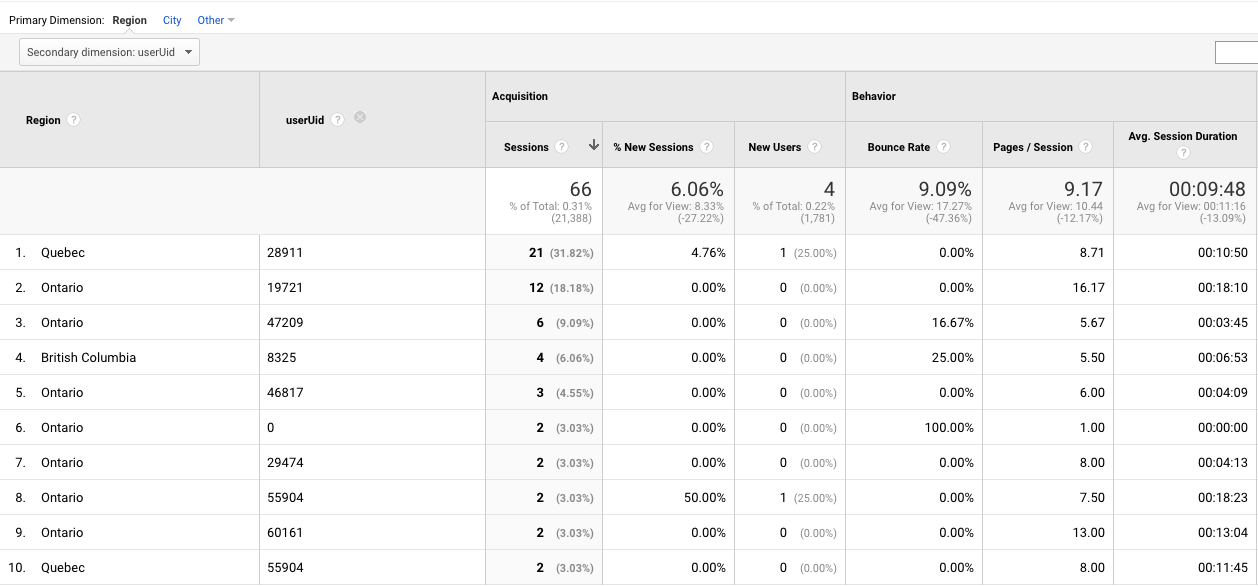Unlocking the Power of Second Dimension Analytics for Improved Information Insights and Decision-Making
In the realm of information analytics, primary dimensions usually take the spotlight, however real deepness of understandings lies within the realm of additional measurements. These added information factors offer a nuanced point of view that can light up patterns and partnerships not readily obvious at very first look. By harnessing the power of secondary dimension analytics, organizations can unveil covert patterns, discover connections, and remove extra purposeful verdicts from their information. The possibility for enhanced decision-making via the utilization of these secondary dimensions is vast, promising a much deeper understanding of intricate information collections and leading the way for even more educated tactical choices.
Significance of Secondary Measurements
Discovering the relevance of secondary measurements in analytics introduces the covert layers of data understandings vital for notified decision-making in various domain names. Additional measurements supply a deeper understanding of primary information by providing added context and viewpoints. By incorporating second dimensions into analytics, companies can extract extra nuanced and detailed understandings from their datasets.
One key value of secondary measurements is their ability to sector and categorize primary information, enabling for an extra comprehensive evaluation of particular parts within a dataset. This segmentation makes it possible for companies to determine patterns, trends, and outliers that could not be noticeable when checking out the information all at once. Furthermore, additional measurements help in discovering relationships and dependencies in between various variables, leading to more exact projecting and predictive modeling.
In addition, secondary dimensions play a vital duty in enhancing data visualization and reporting. By adding additional dimensions to visualizations, such as charts or graphes, experts can develop more useful and insightful depictions of information, promoting far better communication of searchings for to stakeholders. Overall, the integration of secondary dimensions in analytics contributes in unlocking the full potential of data and driving evidence-based decision-making.
Key Advantages of Making Use Of Second Measurements
Making use of second measurements in analytics uses organizations a tactical advantage by enhancing the depth and granularity of information understandings. One vital advantage of integrating secondary dimensions is the ability to sector and filter information, enabling a more detailed evaluation of certain elements within a dataset. This segmentation enables companies to obtain an extra nuanced understanding of their audience, performance metrics, and various other vital information points. By studying information using secondary measurements such as time, place, device kind, or individual demographics, organizations can reveal patterns, patterns, and correlations that might otherwise remain surprise.
In addition, the use of secondary dimensions boosts the context in which main information is interpreted. It supplies a more detailed view of the connections in between different variables, allowing companies to make informed choices based upon a more all natural understanding of their information. Furthermore, second measurements help with the recognition of outliers, abnormalities, and areas for optimization, eventually leading to more reliable approaches and improved outcomes. By leveraging second measurements in analytics, organizations can harness the complete potential of their data to drive far better decision-making and achieve their company goals.
Advanced Information Evaluation Strategies
A deep study innovative data analysis techniques reveals sophisticated methods for extracting important insights from complex datasets. One such technique is artificial intelligence, where algorithms are utilized to determine patterns within data, predict outcomes, and make data-driven decisions. This method permits for the automation of logical version structure, allowing the processing of big volumes of data at a much faster rate than standard techniques.
One more sophisticated technique is anticipating analytics, which makes use of analytical algorithms and device learning strategies to anticipate future results based on historic information. By evaluating patterns and fads, organizations can expect customer behavior, market fads, and prospective risks, encouraging them to make positive decisions.
In addition, message mining and sentiment evaluation are useful techniques for removing understandings from unstructured information sources such as social media comments, client reviews, and study reactions. By analyzing message data, companies can understand consumer viewpoints, recognize emerging fads, and improve their services or products based upon comments.
Enhancing Decision-Making Via Additional Measurements

Enhancing decision-making through additional measurements enables companies to make even more educated and targeted tactical options. For instance, by segmenting customer data based upon second measurements like purchasing history or interaction degrees, firms can tailor their advertising methods to details audience segments, leading to enhanced conversion prices and consumer complete satisfaction. Furthermore, secondary dimensions can help identify correlations and relationships between various variables, making it possible for companies to make data-driven choices that drive development and earnings.
Carrying Out Additional Dimension Analytics
When incorporating secondary measurements in analytics, companies can unlock deeper understandings that drive calculated decision-making and improve overall efficiency. Carrying out additional dimension analytics calls for an organized method to ensure reliable use of this powerful device. The very first step is to identify the crucial metrics and dimensions that straighten with the company's tactical objectives. This involves understanding the details concerns the organization looks for to answer and the information points called for to resolve them.

Additionally, companies need to take advantage of progressed analytics devices and innovations to enhance the process of integrating additional measurements. These tools can automate data handling, evaluation, and visualization, allowing organizations to concentrate on analyzing insights as opposed to hands-on information adjustment.
Conclusion
Finally, second measurement analytics play an essential function in improving information understandings and decision-making processes. By utilizing sophisticated data evaluation strategies and applying secondary dimensions effectively, organizations can unlock the power of their data to drive calculated service choices. The vital advantages of making use of second measurements can not be overemphasized, as they provide a deeper understanding of data trends and relationships. It is important for organizations to leverage secondary dimension analytics to stay competitive in today's index data-driven landscape.
In the realm of information analytics, main dimensions frequently take the spotlight, yet the real depth of page insights exists within the realm of secondary measurements.Making use of additional dimensions in analytics supplies companies a calculated advantage by boosting the deepness and granularity of data understandings. By leveraging additional dimensions in analytics, organizations can harness the full capacity of their data to drive much better decision-making and achieve their organization goals.
Carrying out data validation procedures and normal audits can assist preserve information top quality and dependability.
By using sophisticated data evaluation methods and executing second dimensions effectively, companies can open the power of their data to drive strategic service decisions.